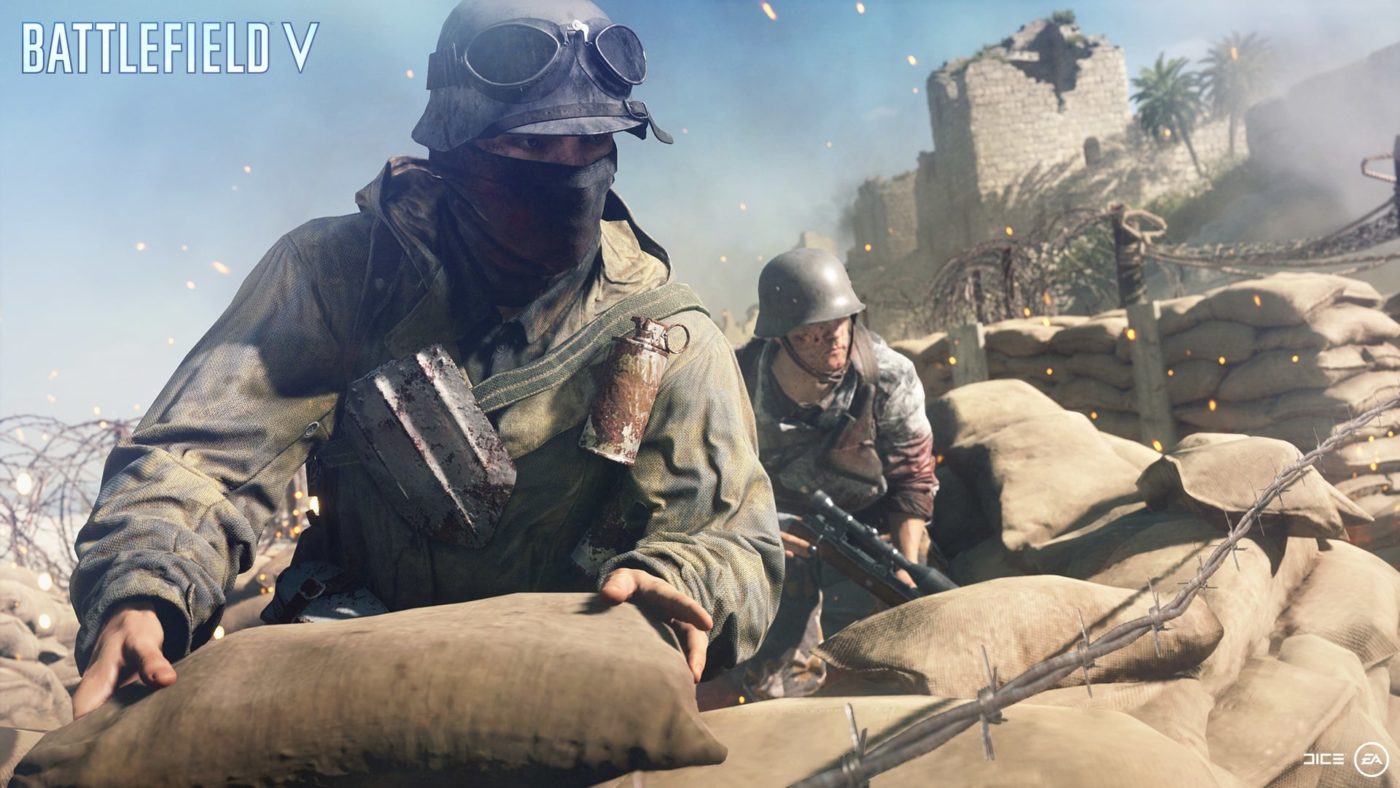Just the other day, DICE talked about the gunplay in Battlefield V, and what the studio’s plans, and even explained how recoil and the like work. Continuing the studio’s focus on weapons this week, DICE has now written an entire blog post about one of the most least talked about things when it comes to first-person shooters, and that’s bullet penetration.
In the website post, Rickard Antroia, Senior Game Designer on Battlefield V, sat down for a Q&A to talk about what exactly is bullet penetration and how it works in the game
What is Bullet Penetration?
Bullet Penetration allows bullets to go through thin materials and deal reduced damage to opponents on the other side. It’s based on weapon categories and provides an additional dimension of damaging enemies – or flushing them out of cover.
How did you approach the concept of Bullet Penetration in Battlefield V?
Bullet Penetration builds upon our destruction design in Battlefield 1, where we saw that a lot of walls, houses, and other covers – “assets” to us developers – deteriorated quickly during combat and the battlefield was flattened. This made us reevaluate our destruction classes and how we built props and architecture. The goal was to increase the interaction between the player and the environment while reducing the sheer number of parts in our assets.
Line-of-fire covers had to deteriorate in stages or survive low-grade explosions and bullets. To avoid having transport vehicles and hand grenades level the playing field, covers were upgraded to resist these types of damage. The same went for Fortifications. These assets needed to be sturdy enough to give you decent cover, especially since it takes time and exposure to enemy bullets to build them.
How will players experience Bullet Penetration in-game?
If you’re behind cover, and an enemy with a Machine Gun has you pinned down, you’ll definitely feel the heat. LMGs, MMGs, etc. have the power to pass through covers (with heavily-reduced damage), and thereby become counter-sniper tools, pushing you out of your comfortable hiding spot.
Visually, bullets that penetrate will create a chunky, debris-themed effect for the player on the receiving end, and a smaller bullet hole with a more low-key visual effect facing the shooter. Non-penetrating bullets will dent hard materials or crack open and rip parts of the surface facing the shooter. Naturally, Bullet Penetration is an ongoing endeavor. We are shipping with a certain setup but are willing to tune and upgrade it in the future.
How do different weapon and bullet types penetrate materials in different ways?
General sidearms like pistols and carbines will go through doors and thin assets like cloth, light vegetation, and glass. The next category contains the SMG and Shotguns, which have slightly better penetration values. Semi-Automatic, Slug, and Assault Rifles exist in their own category, also with some minor deviations. Sniper Rifle is an upgraded version of rifles and becomes the stepping stone to the fully automatic Light Machine Guns, which can break through the walls in wooden buildings and push through barricade covers.
Beyond infantry weapons you have the vehicle bullets, the HMGs, and the airplane 20mm cannon. They are all high-penetration weapons that break through plaster and brick walls, be it with reduced damage.
For the full Q&A, head on over to EA’s website.
In today’s Battlefield V news, check out how a “base level soldier” looks like right here.
